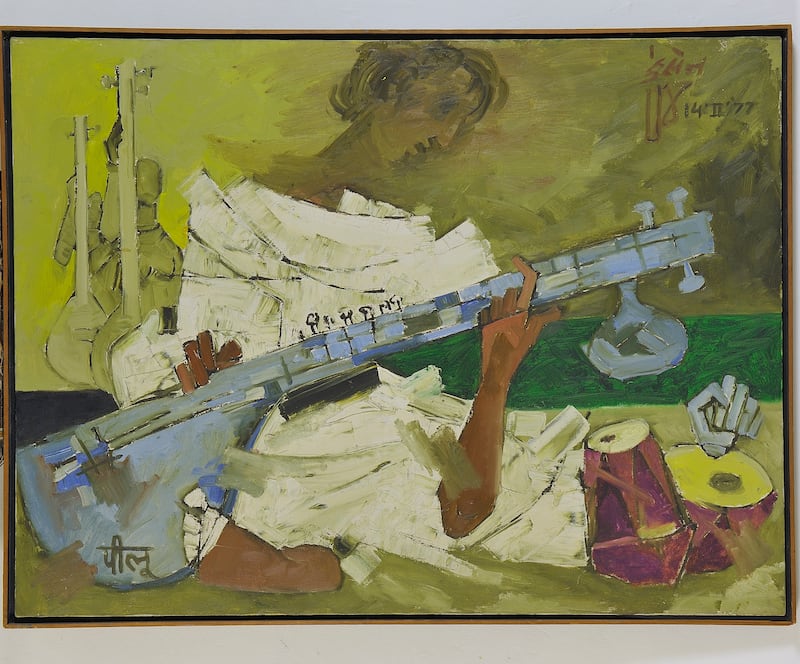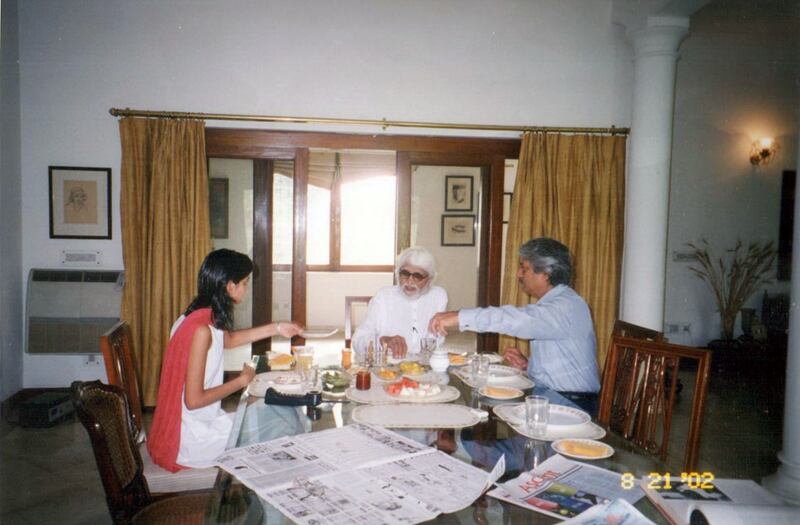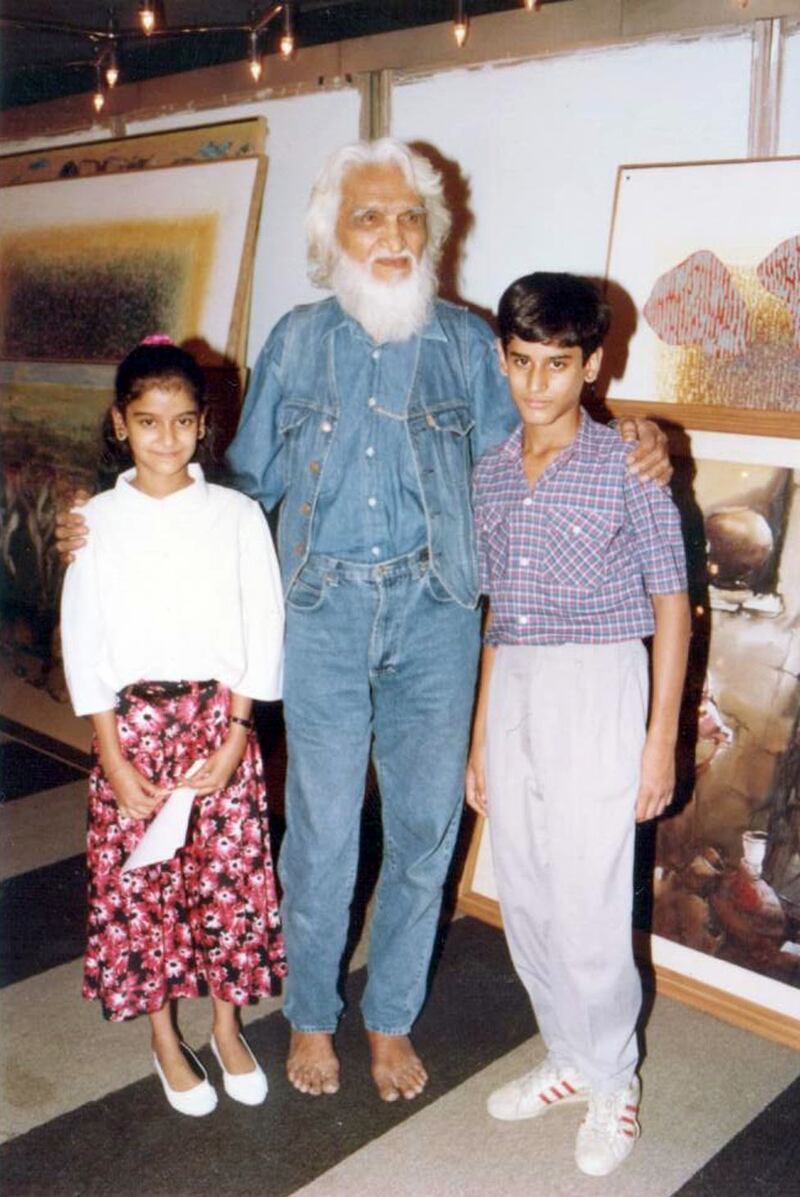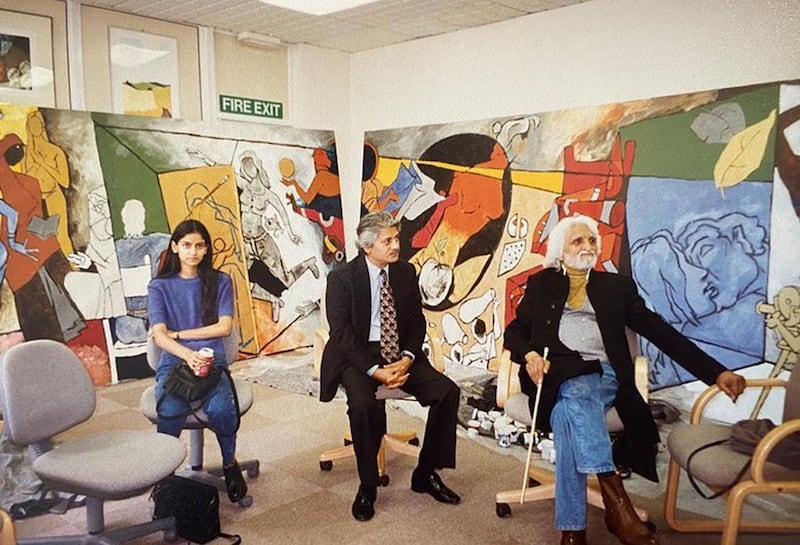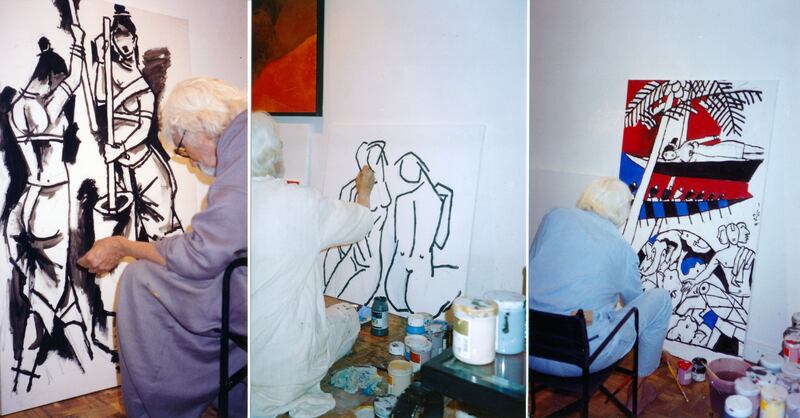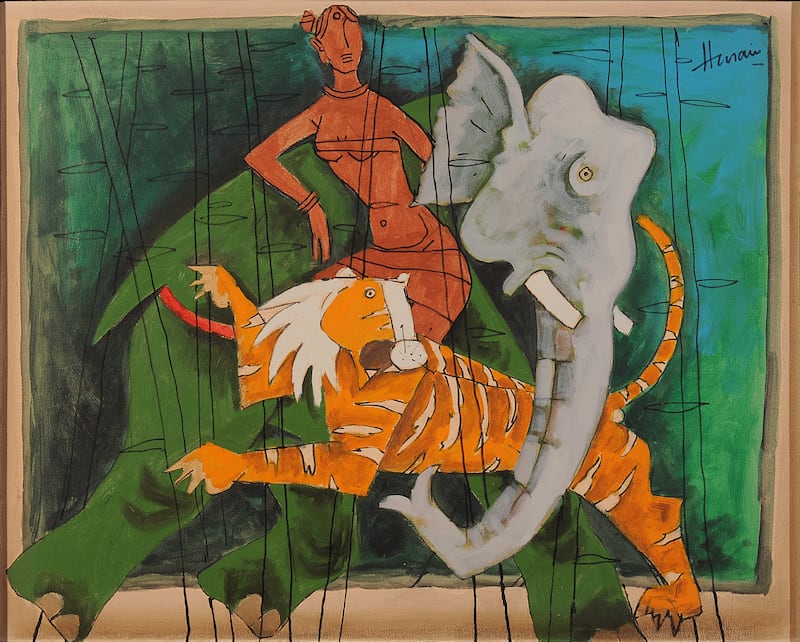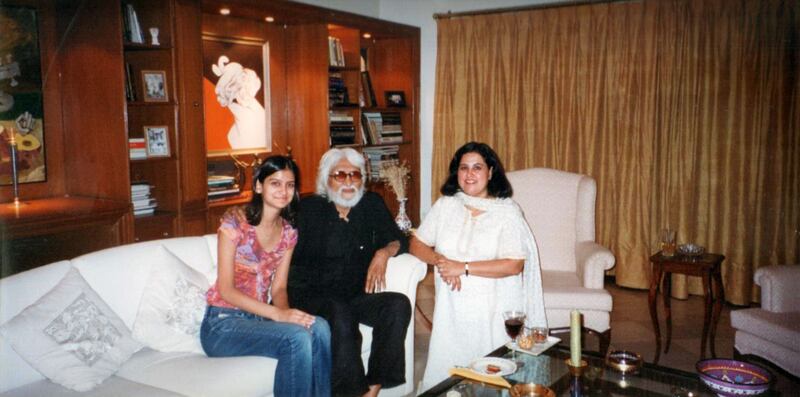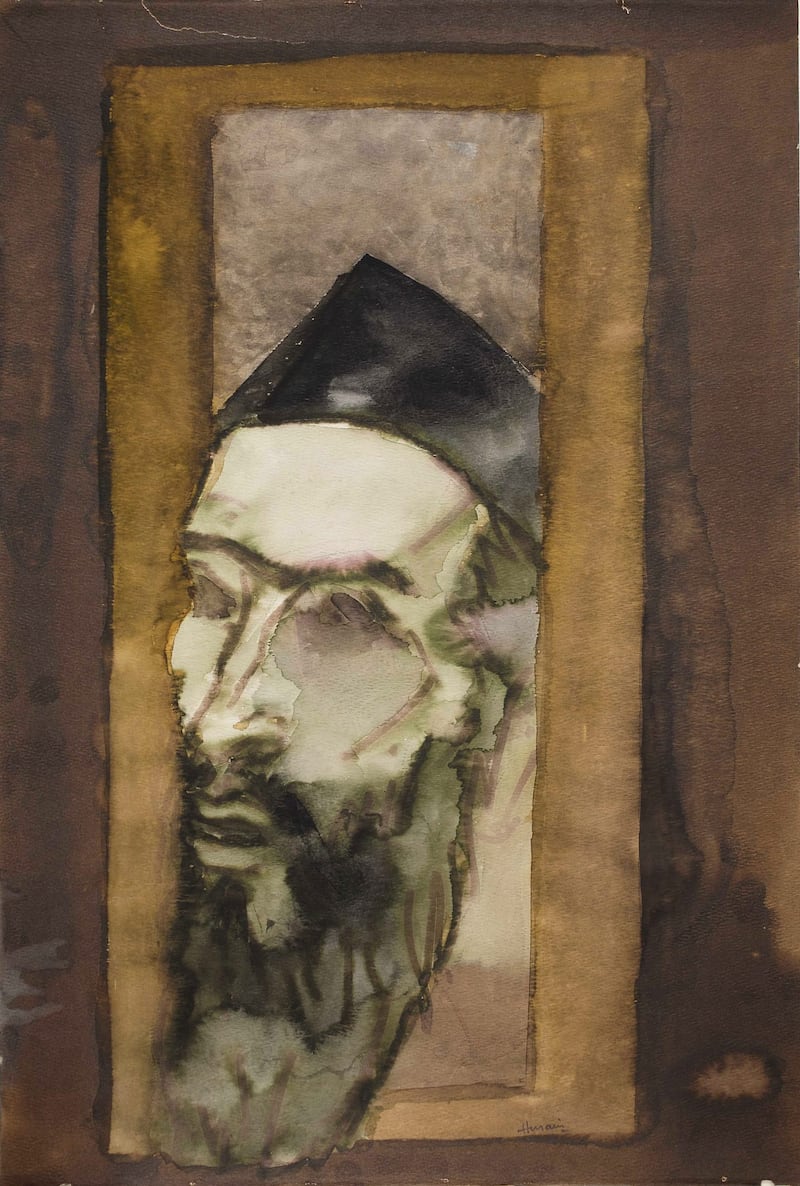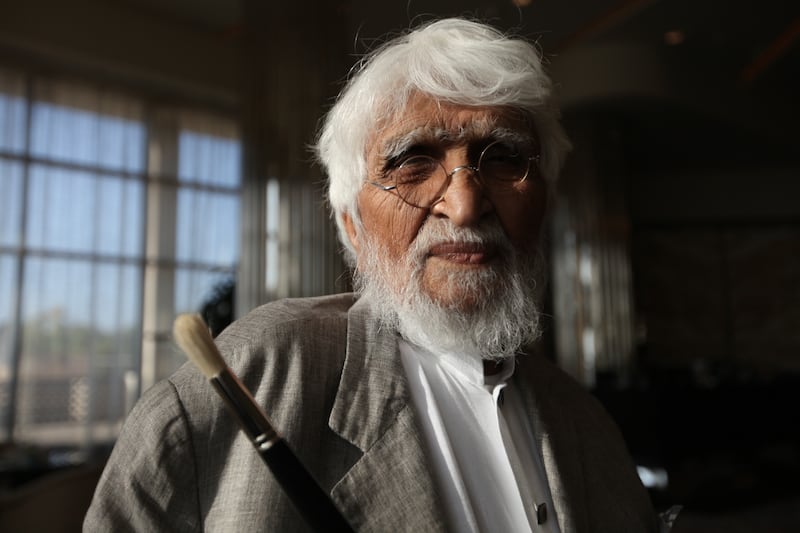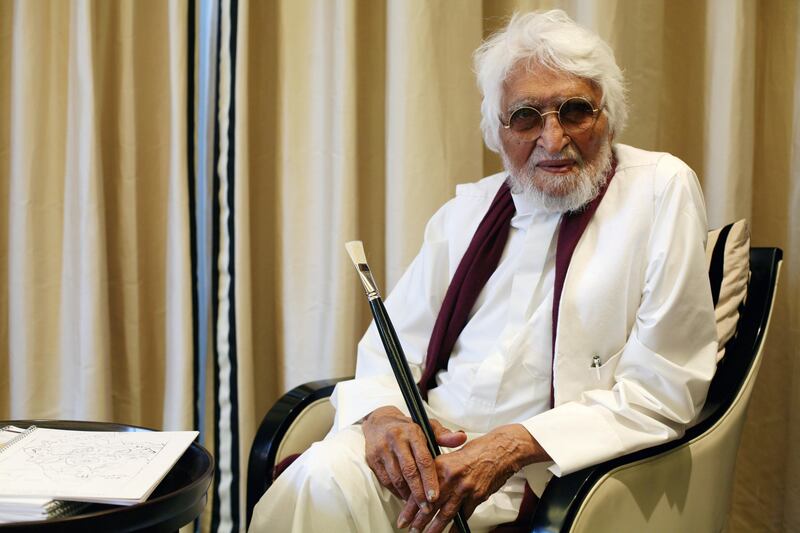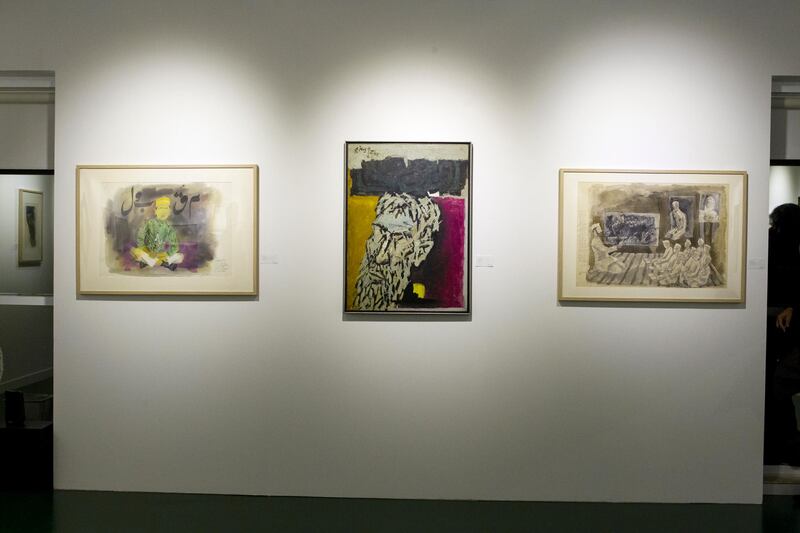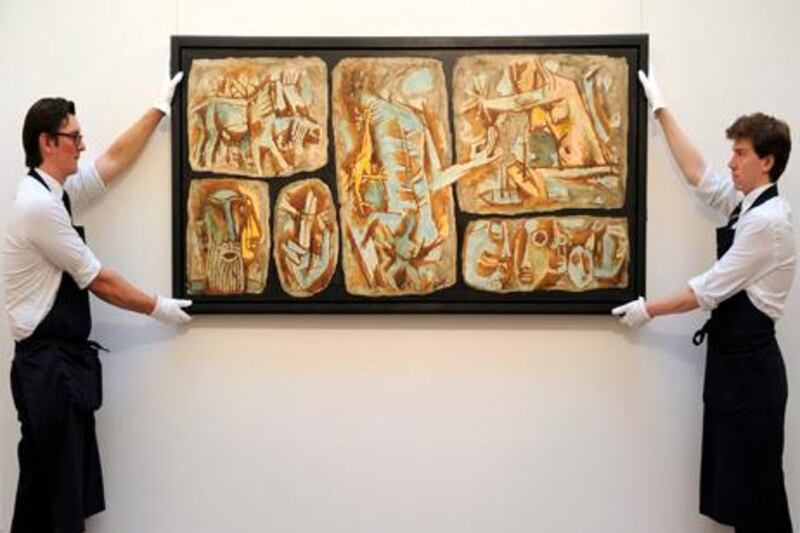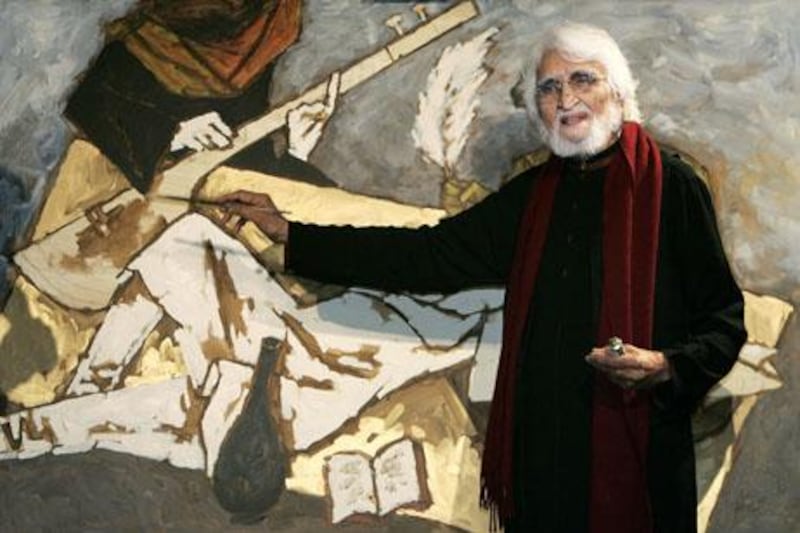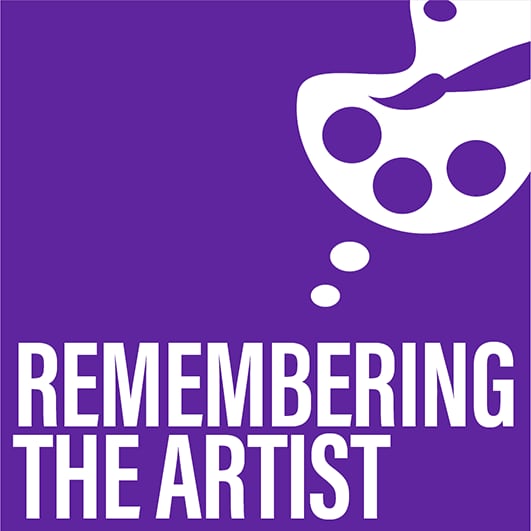
He was impossible to ignore. His commanding presence was augmented by his appearance — here was a smartly dressed, white-haired man, who walked around barefoot armed with a long paintbrush that looked like a cane, and who painted at any time, anywhere. He loved fast cars and picked his friends up in his Bugatti or Ferrari. How could anyone not stop and stare at MF Husain?
He would show up unexpectedly at our family-run Vadehra Gallery in Delhi and the space would suddenly convert into a makeshift studio as staff scurried to fetch paints and canvasses. I’d drop anything I was doing to watch him paint. He most definitely enjoyed the attention and loved leaving viewers transfixed; and just as quickly as the "painting performance" started, it ended, leaving us wanting more with bated breath.
He’d often come over for dinner and then announce that he would stay the night, and while we fretted over prepping the guest bedroom, Husain made himself comfortable on the living room couch, painting and using fine China dinnerware as palette dishes to mix his paints. My father kept many of these plates.
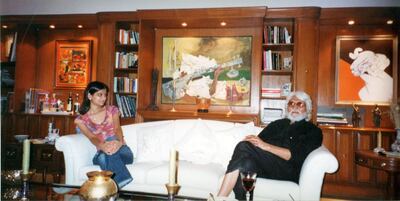
Once, in the early 2000s, he walked to the local market to get a bhutta (corn on the cob) from the old lady around the corner from our gallery. Realising that he didn’t have money, he proposed a drawing and she accepted. My father walked back and offered her 10,000 rupees ($300-$400) for it. She refused. “I know this guy and I know what his paintings are worth,” she replied.
Husain was an Indian legend who celebrated Indianness — from Mohandas Gandhi and Mother Teresa to the epic poems of India, the Ramayana and Mahabharata and local life, he tackled varied subjects and themes in his oeuvre. From the late 1940s, he became known as a national artist and went on to achieve state recognition and awards.
Cubist, colourful and charged, his work oscillates between humour and sarcasm, which altogether, made for paintings so stimulating, it’s impossible not to react to them. Some even angered religious groups. Perhaps above all else, Husain was a poet. Everything he said and painted was expressed with such poetry.
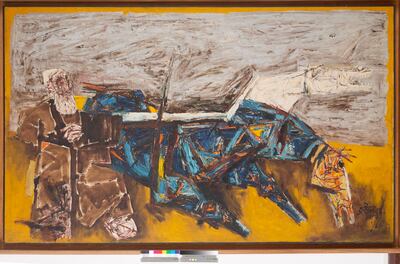
I’d grown up around art and artists, many of whom saw me as my father’s daughter. Except Husain. He saw me as an individual and it is because he had interests beyond the arts that we were able to talk about a multitude of subjects. In India, it’s all about cricket and Bollywood and the latter was an obsession I shared with Husain, who indulged in discussions with me about its actors and films.
I think that this fascination with Bollywood came from the 1930s when he painted hoardings of movie posters to make a living in Mumbai after he graduated from the Sir Jamsetjee Jeejeebhoy School of Art. After his work was exhibited by the Bombay Art Society in 1947, Husain was invited to join five painters to establish the Progressive Artists Group, which fused European modernity with Indian history. His work started to gain momentum internationally, and was exhibited at reputed galleries and institutions including the São Paolo Biennale in 1971.
The captivation with the moving picture led him to write and direct Through the Eyes of a Painter, an experimental film about Rajasthan that won a Golden Bear at the 1967 Berlin International Film Festival. He went on to produce and direct several films, including one in 2000 with his muse, the Indian star Madhuri Dixit, who was the subject of a series of paintings by Husain.
He’d often make little drawings of the movies he’d seen and give them to me; a memorable one was my birthday card in 2007 which he made during our trip to attend HORN PLEASE – The Narrative in Contemporary Indian Art, an exhibition at the Kunstmuseum Bern that exhibited some of his paintings.
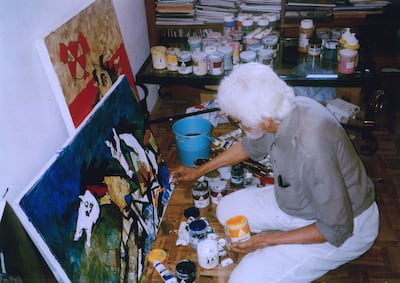
He had a spontaneity about him that spread across all aspects of his life, including painting, which he did anytime and anywhere. Months before he passed in 2011, I dropped by his London home to pick up paintings of horses to exhibit at the gallery. When I showed up, there were about a dozen people there, and he realised he hadn’t finished the paintings. “Do you have about 10 minutes?” he asked.
Husain then got some paints and brushes, and in what seemed like a flash, I was in a black cab with two masterpieces. It reminded me of another amusing London memory from the early 2000s, when my family and I were travelling from Delhi to London and had to drop something off for Husain, so we decided to do so on our way to the airport. “Oh, you know what? I’ll join you to London,” he said casually, and just like that, got into the car, passport in hand. Husain wasn’t unorganised; on the contrary, there was a method to the madness, and that extended on to his compositions.
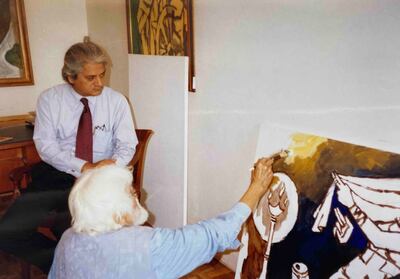
What looked incomprehensible, whether in form or colour, would suddenly transform — he began with an outline of a woman or horse and would then colour in, all the while leaping from one corner of the painting to another. Colours that seemed absurd together suddenly looked completely harmonious, and one could sense that he possessed a certainty when it came to those combinations.
In each movement and every brushstroke, it was palpable that he knew exactly what he was doing. There was an ease about him; he didn’t have hang-ups about colour or medium, and just made do with what was in hand. It always came out superb, like the beautiful drawing he made on the paper placemat at Taipan, his favourite Chinese restaurant in Delhi.
Husain was always ready and he took it easy — that was his life mantra and I guess I learnt that from him, as well as the virtue of hard work. Though he went with the flow, not a day went by without work, and even in his nineties, he wanted to do more and was always thinking about the next plan.
All these years later, when I think about him, it’s not his art that comes to mind first. I just smile remembering that energy and owe him a debt of gratitude for all the love.
